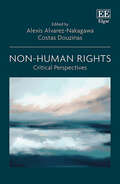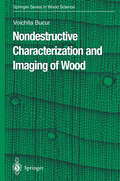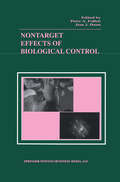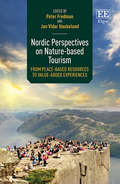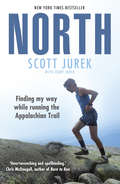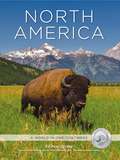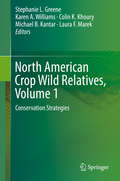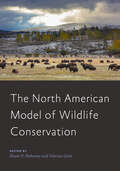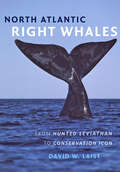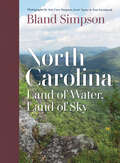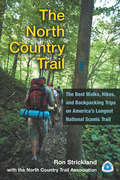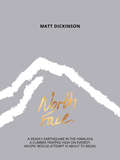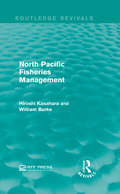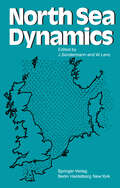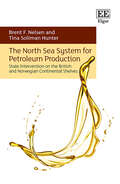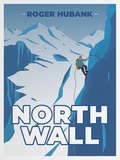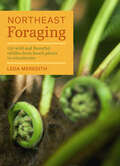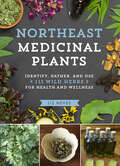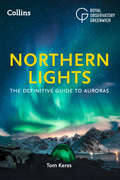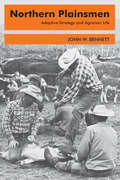- Table View
- List View
Non-Human Rights: Critical Perspectives
Non-human rights are a reality today: this book unpacks their paradoxes as well as their significance for our historic crucible. As animals, rivers, mountains, rainforests, ecosystems, and synthetic entities such as machines, AI, and robots gain recognition as subjects of rights in different parts of the world, non-human rights become part of our ordinary legal landscape and vocabulary. This timely book provides a critical outlook on this rising trend at the crossroads of two of the main concerns of the 21st century: climate change and automation.In seeking to address the foundations, genealogies, philosophies, and impacts of non-human rights, the contributors to this volume examine both their potential and limitations. Are non-human rights just a mere extension of the liberal human rights discourse or, as some suggest, something else and new based on different principles? Are they a ‘revolution’ or just ‘more of the same’? Are they a practical solution that could ‘save us’ from climate disaster and self-destruction through automation or part of the problem and obstacle for social change?This book will be a vital resource for scholars and students of human rights, environmental law, animal rights, law and technology studies, legal theory, socio-legal studies, constitutional law and public international law. Providing an accessible overview of the changing patterns of the rights discourse in contemporary societies, it will also benefit anthropologists, climate and animal rights activists, political scientists, international relations scholars, policy makers and sociologists.
Nondestructive Characterization and Imaging of Wood (Springer Series in Wood Science)
by Voichita BucurThis book on the Nondestructive Characterization and Imaging of Wood by Professor Voichita Bucur is truly the most outstanding reference on the subject ever written. Since the origins of mankind, wood has played a key role in the history of humans and other living creatures, ranging from provision of life from trees giving air, heat, light, and food to nourish their bodies to structures to protect them from the elements. Wood has also played a key role in one of the world's primary religions. Nondestructive diagnostics methods have long found application in medi cal practice for examination of the human body in order to detect life threatening abnormalities and permit diagnosis to extend life. Nondestructive testing has been used for many years to insure the safety of machinery, air craft, railroads, tunnels, buildings and many other structures. Therefore, it is timely for a treatise, like the present one, to be written describing how wood can be characterized without employing destructive test methods. Since wood is so valuable to mankind, it is important to know the latest methods to nondestructively characterize wood for all practical applications.
Nontarget Effects of Biological Control
by Jian J. Duan Peter A. FollettNontarget Effects of Biological Control is the first book of its kind. The environmental safety of biological control has come under scrutiny due to several areas of concerns: the irreversibility of alien introductions, the prevalence of host switching to innocuous native or beneficial species, dispersal of the biocontrol agent to new habitats away from croplands, and the lack of research on the efficacy and impact of biocontrol attempts. The debate has been strongly polarized between conservationists and biological control practitioners. Nontarget Effects of Biological Control proposes that retrospective analyses of systems in place in which nontarget effects are now documented or suspected provide the necessary information for planning and evaluating future releases to reduce risk. The book presents case histories of past biological control introductions from island and continental ecosystems.
Nordic Perspectives on Nature-based Tourism: From Place-based Resources to Value-added Experiences
Nature-based tourism (NBT) is a sector where entrepreneurial success is highly knowledge driven. This insightful book offers a comprehensive evaluation of NBT in a Nordic context, highlighting how long-established Nordic traditions of outdoor recreation practices can reveal lessons for the field more broadly. Featuring contributions from expert scholars, Nordic Perspectives on Nature-Based Tourism examines the links between place-based resources and value-added experiences. It considers the way in which NBT calls for an integrated approach to manage resources for both outdoor recreation and the development of commercial experience products. Chapters explore Nordic and international perspectives, local communities, market dynamics, firms, creativity, innovations and value-added experience products. Undergraduate and graduate students and scholars in tourism and related fields such as geography, planning, hospitality, outdoor recreation and natural resource management will find the knowledge and understanding gained from the book invaluable. It will also prove useful for policymakers, entrepreneurs and volunteers.
North: Finding My Way While Running the Appalachian Trail
by Jenny Jurek Scott Jurek*The New York Times Bestseller*‘Heartwrenching and spellbinding.’ Christopher McDougall, author of Born to Run2,200 miles. 47 days. One remarkable athlete.Scott Jurek takes on the Appalachian Trail.Scott Jurek is one of the greatest ultramarathon runners of all time and a living legend. North tells the story of his biggest challenge, undertaken at the end of a career full of glittering achievements: breaking the speed record for the Appalachian Trail, the famous path that runs for nearly 2,200 miles between Georgia and Maine, almost the entire length of the United States.An ordeal of torturous physical exertion, debilitating sleep deprivation and unimaginable psychological pressure, the run required Jurek to reinvent himself at an age when lesser athletes would have been winding down. Battered by the elements and nearly beaten by an agonising injury, he ran, hiked and stumbled for forty-six days, eleven hours and twenty minutes, covering nearly fifty miles every single day. Always unsure whether he was going to make it to the finish, he was pulled north in pursuit of a lifelong dream.Filled with Jurek’s unique insights into running, as well as compelling descriptions of the awe-inspiring landscape of the Appalachian Trail and its rich history, North will delight runners and non-runners alike and will inspire anyone striving for their personal best.Praise for Scott Jurek‘The greatest ultrarunner of them all.’ New York Times‘Scott Jurek’s record-setting journey on the Appalachian Trail was the most punishing, most demanding, most gruelling feat I’ve ever personally witnessed . . . [North is] an immersive and engaging book.’ Aron Ralston, author of 127 Hours‘Probably America’s greatest ever ultrarunner.’ Guardian‘One of the greatest runners of all time.’ Runner’s World
North America: A World in One Continent
by Huw CordeyThe North American continent stretches over 9.5 million square miles, and is home to more than 500 million people, who share it with hundreds of thousands of species of mammals, birds, insects, and plants-many of them extraordinary, unforgettable, and unique. With 150,000 miles of coastline, North America also has the longest and most abundant shores of any continent on Earth.In the stunning seven-part series from Discovery Channel, renowned nature producer Huw Cordey travels from the Arctic to the Tropics, revealing the wonders of the most dynamic continent on Earth-from the stunning glow of the Aura Borealis in Alaska to the thousands of tornadoes that batter the Great Plains each year to the 55-ton crystals in Mexico's Crystal Cave.North America, the companion book to the television series, follows the producers as they tell the story of this rich and eclectic land through more than 250 gorgeous full-color photographs and engaging essays. Chock-full of interesting facts about the various ecology and wildlife of the many regions of the continent- Prairies, Coasts, Mountains, Freshwater, Deserts, and Forests- North America exposes the continent as you've never seen it before.
North American Crop Wild Relatives, Volume 1: Conservation Strategies
by Stephanie L. Greene Karen A. Williams Colin K. Khoury Michael B. Kantar Laura F. MarekThe plant species that humans rely upon have an extended family of wild counterparts that are an important source of genetic diversity used to breed productive crops. These wild and weedy cousins are valuable as a resource for adapting our food, forage, industrial and other crops to climate change. Many wild plant species are also directly used, especially for revegetation, and as medicinal and ornamental plants. North America is rich in these wild plant genetic resources. This book is a valuable reference that describes the important crop wild relatives and wild utilized species found in Canada, the United States and Mexico. The book highlights efforts taken by these countries to conserve and use wild resources and provides essential information on best practices for collecting and conserving them. Numerous maps using up-to-date information and methods illustrate the distribution of important species, and supplement detailed description on the potential value these resources have to agriculture, as well as their conservation statuses and needs. There is broad recognition of the urgent need to conserve plant diversity; however, a small fraction of wild species is distinguished by their potential to support agricultural production. Many of these species are common, even weedy, and are easily overshadowed by rare or endangered plants. Nevertheless, because of their genetic proximity to agriculturally important crops or direct use, they deserve to be recognized, celebrated, conserved, and made available to support food and agricultural security. This comprehensive two-volume reference will be valuable for students and scientists interested in economic botany, and for practitioners at all levels tasked with conserving plant biodiversity.The chapters 'Public Education and Outreach Opportunities for Crop Wild Relatives in North America' and 'Genetic Resources of Crop Wild Relatives – A Canadian Perspective' are open access under a CC BY 4.0 license via link.springer.com.
North American Crop Wild Relatives, Volume 2: Important Species
by Stephanie L. Greene Karen A. Williams Colin K. Khoury Michael B. Kantar Laura F. MarekThe plant species that humans rely upon have an extended family of wild counterparts that are an important source of genetic diversity used to breed productive crops. These wild and weedy cousins are valuable as a resource for adapting our food, forage, industrial and other crops to climate change. Many wild plant species are also directly used, especially for revegetation, and as medicinal and ornamental plants. North America is rich in these wild plant genetic resources. This book is a valuable reference that describes the important crop wild relatives and wild utilized species found in Canada, the United States and Mexico. The book highlights efforts taken by these countries to conserve and use wild resources and provides essential information on best practices for collecting and conserving them. Numerous maps using up-to-date information and methods illustrate the distribution of important species, and supplement detailed description on the potential value these resources have to agriculture, as well as their conservation statuses and needs. There is broad recognition of the urgent need to conserve plant diversity; however, a small fraction of wild species is distinguished by their potential to support agricultural production. Many of these species are common, even weedy, and are easily overshadowed by rare or endangered plants. Nevertheless, because of their genetic proximity to agriculturally important crops or direct use, they deserve to be recognized, celebrated, conserved, and made available to support food and agricultural security. This comprehensive two-volume reference will be valuable for students and scientists interested in economic botany, and for practitioners at all levels tasked with conserving plant biodiversity.
The North American Model of Wildlife Conservation (Wildlife Management and Conservation)
by Shane P. Mahoney Valerius GeistAt the end of the nineteenth century, North America suffered a catastrophic loss of wildlife driven by unbridled resource extraction, market hunting, and unrelenting subsistence killing. This crisis led powerful political forces in the United States and Canada to collaborate in the hopes of reversing the process, not merely halting the extinctions but returning wildlife to abundance. While there was great understanding of how to manage wildlife in Europe, where wildlife management was an old, mature profession, Continental methods depended on social values often unacceptable to North Americans. Even Canada, a loyal colony of England, abandoned wildlife management as practiced in the mother country and joined forces with like-minded Americans to develop a revolutionary system of wildlife conservation. In time, and surviving the close scrutiny and hard ongoing debate of open, democratic societies, this series of conservation practices became known as the North American Model of Wildlife Conservation.In this book, editors Shane P. Mahoney and Valerius Geist, both leading authorities on the North American Model, bring together their expert colleagues to provide a comprehensive overview of the origins, achievements, and shortcomings of this highly successful conservation approach. This volume• reviews the emergence of conservation in late nineteenth–early twentieth century North America• provides detailed explorations of the Model's institutions, principles, laws, and policies• places the Model within ecological, cultural, and socioeconomic contexts• describes the many economic, social, and cultural benefits of wildlife restoration and management• addresses the Model's challenges and limitations while pointing to emerging opportunities for increasing inclusivity and optimizing implementationStudying the North American experience offers insight into how institutionalizing policies and laws while incentivizing citizen engagement can result in a resilient framework for conservation. Written for wildlife professionals, researchers, and students, this book explores the factors that helped fashion an enduring conservation system, one that has not only rescued, recovered, and sustainably utilized wildlife for over a century, but that has also advanced a significant economic driver and a greater scientific understanding of wildlife ecology.Contributors: Leonard A. Brennan, Rosie Cooney, James L. Cummins, Kathryn Frens, Valerius Geist, James R. Heffelfinger, David G. Hewitt, Paul R. Krausman, Shane P. Mahoney, John F. Organ, James Peek, William Porter, John Sandlos, James A. Schaefer
The North American Model of Wildlife Conservation (Wildlife Management and Conservation)
by Shane P. Mahoney Valerius GeistAt the end of the nineteenth century, North America suffered a catastrophic loss of wildlife driven by unbridled resource extraction, market hunting, and unrelenting subsistence killing. This crisis led powerful political forces in the United States and Canada to collaborate in the hopes of reversing the process, not merely halting the extinctions but returning wildlife to abundance. While there was great understanding of how to manage wildlife in Europe, where wildlife management was an old, mature profession, Continental methods depended on social values often unacceptable to North Americans. Even Canada, a loyal colony of England, abandoned wildlife management as practiced in the mother country and joined forces with like-minded Americans to develop a revolutionary system of wildlife conservation. In time, and surviving the close scrutiny and hard ongoing debate of open, democratic societies, this series of conservation practices became known as the North American Model of Wildlife Conservation.In this book, editors Shane P. Mahoney and Valerius Geist, both leading authorities on the North American Model, bring together their expert colleagues to provide a comprehensive overview of the origins, achievements, and shortcomings of this highly successful conservation approach. This volume• reviews the emergence of conservation in late nineteenth–early twentieth century North America• provides detailed explorations of the Model's institutions, principles, laws, and policies• places the Model within ecological, cultural, and socioeconomic contexts• describes the many economic, social, and cultural benefits of wildlife restoration and management• addresses the Model's challenges and limitations while pointing to emerging opportunities for increasing inclusivity and optimizing implementationStudying the North American experience offers insight into how institutionalizing policies and laws while incentivizing citizen engagement can result in a resilient framework for conservation. Written for wildlife professionals, researchers, and students, this book explores the factors that helped fashion an enduring conservation system, one that has not only rescued, recovered, and sustainably utilized wildlife for over a century, but that has also advanced a significant economic driver and a greater scientific understanding of wildlife ecology.Contributors: Leonard A. Brennan, Rosie Cooney, James L. Cummins, Kathryn Frens, Valerius Geist, James R. Heffelfinger, David G. Hewitt, Paul R. Krausman, Shane P. Mahoney, John F. Organ, James Peek, William Porter, John Sandlos, James A. Schaefer
North Atlantic Right Whales: From Hunted Leviathan to Conservation Icon
by David W. LaistIn the cold waters of the unforgiving North Atlantic Ocean, some of the heartiest humans of medieval days ventured out in search of whales. Through the centuries, people on both sides of the Atlantic became increasingly dependent on whale oil and other cetacean products. To meet this growing demand, whaling became ever more sophisticated and intense, leading to the collapse of what was once a seemingly inexhaustible supply of large cetaceans. Central to the whale's subsequent struggle for existence has been one species;¢;‚¬;€?the North Atlantic right whale. Conservationist David W. Laist now provides the first complete history of the North Atlantic right whale, from its earliest encounters with humans to its close brush with extinction, to its currently precarious yet hopeful status as a conservation icon.Favored by whalers because of their high yields of oil and superior baleen, these giants became known as "the right whale to hunt," and their numbers dwindled to a mere 100 individuals worldwide. Their dire status encouraged the adoption of a ban on hunting and a treaty that formed the International Whaling Commission. Recovery of the species, however, has proven elusive. Ship strikes and entanglement in commercial fishing gear have hampered herculean efforts to restore the population. Today, only about 500 right whales live along the US and Canadian Atlantic coasts;¢;‚¬;€?an improvement from the early twentieth century, but still a far cry from the thousands that once graced Atlantic waters.Laist's masterpiece features an incredible collection of photographs and artwork that give life to the fascinating history that unfolds in its pages. The result is a single volume that offers a comprehensive understanding of North Atlantic right whales, the role they played in the many cultures that hunted them, and our modern attempts to help them recover.
North Atlantic Right Whales: From Hunted Leviathan to Conservation Icon
by David W. LaistIn the cold waters of the unforgiving North Atlantic Ocean, some of the heartiest humans of medieval days ventured out in search of whales. Through the centuries, people on both sides of the Atlantic became increasingly dependent on whale oil and other cetacean products. To meet this growing demand, whaling became ever more sophisticated and intense, leading to the collapse of what was once a seemingly inexhaustible supply of large cetaceans. Central to the whale's subsequent struggle for existence has been one species;¢;‚¬;€?the North Atlantic right whale. Conservationist David W. Laist now provides the first complete history of the North Atlantic right whale, from its earliest encounters with humans to its close brush with extinction, to its currently precarious yet hopeful status as a conservation icon.Favored by whalers because of their high yields of oil and superior baleen, these giants became known as "the right whale to hunt," and their numbers dwindled to a mere 100 individuals worldwide. Their dire status encouraged the adoption of a ban on hunting and a treaty that formed the International Whaling Commission. Recovery of the species, however, has proven elusive. Ship strikes and entanglement in commercial fishing gear have hampered herculean efforts to restore the population. Today, only about 500 right whales live along the US and Canadian Atlantic coasts;¢;‚¬;€?an improvement from the early twentieth century, but still a far cry from the thousands that once graced Atlantic waters.Laist's masterpiece features an incredible collection of photographs and artwork that give life to the fascinating history that unfolds in its pages. The result is a single volume that offers a comprehensive understanding of North Atlantic right whales, the role they played in the many cultures that hunted them, and our modern attempts to help them recover.
North Carolina: Land of Water, Land of Sky
by Bland SimpsonBland Simpson, the celebrated bard of North Carolina's sound country, has blended history, observation of nature, and personal narrative in many books to chronicle the people and places of eastern Carolina. Yet he has spent much of his life in the state's Piedmont, with regular travels into its western mountains. Here, for the first time, Simpson brings his distinctive voice and way of seeing to bear on the entirety of his home state, combining storytelling and travelogue to create a portrait of the Old North State with care and humor. Three of the state's finest photographers come along to guide the journey: Simpson's wife and creative partner, Ann Cary Simpson, professional photographer Scott Taylor, and writer and naturalist Tom Earnhardt. Their photos, combined with Simpson's rich narrative, will inspire readers to consider not only what North Carolina has been and what it is but also what we hope it will be. This book belongs on the shelf of longtime residents, newcomers, and visitors alike.
The North Country Trail: The Best Walks, Hikes, and Backpacking Trips on America’s Longest National Scenic Trail
by Ron Strickland North Country AssociationThe North Country Trail is the longest of America’s eleven congressionally designated National Scenic Trails. Winding through seven states—New York, Pennsylvania, Ohio, Michigan, Wisconsin, Minnesota, and North Dakota—the NCT’s 4,600 miles attract more than one million visitors annually. These hikers are treated to a smorgasbord of Upper Midwest hiking featuring everything from urban strolls to backcountry adventure through mountains, rivers, prairies, and shoreline. This book is the definitive guide for NCT hikers—whether first-timers, seasoned backpackers, or any level in between—who wish to maximize their experience on this splendid trail. In addition to a full overview of the trail’s tread in each state, the guide describes in detail forty of the NCT’s premier segments, with helpful information including easy-to-read trail descriptions, physical and navigation difficulties, trail highlights, hiking tips, and precise maps incorporating the latest GPS technology.
North Face: A Deadly Earthquake In The Himalaya. A Climber Trapped High On Everest. An Epic Rescue Attempt Is About To Begin. (The Everest Files #2)
by Matt DickinsonThe Everest Files story continues in 'North Face' ... Ryan Hart is an 18-year-old adventurer on a mission. To get himself to Mount Everest and check out the truth about the world's highest peak. Friends have told him dark stories about the mountain, outrageous things that he wants to see for himself. Just a few hours after Ryan arrives at Everest Base Camp a lethal earthquake strikes. Avalanches pound the glacier, burying Ryan's climbing buddy and killing many others. A desperate rescue saves Ryan's friend, but only after a local Tibetan girl -Tashi - helps with the search. Stress levels are running high among the climbing teams. The mountain is shut for the season because it is judged too dangerous. Then a flashlight reveals a clue. Someone is alive, high on Everest's treacherous north face!Tashi is convinced it is her 15-year-old brother. Ryan is prepared to risk everything to help. Storm clouds gather as they set out on their illegal climb, a do-or-die mission which the local militia will do anything to stop.
North Pacific Fisheries Management (Routledge Revivals)
by Hiroshi Kasahara William BurkeIn anticipation of the UN Conference of the Law of the Sea taking place in 1973, Dr Kasahara and Dr Burke of the University of Washington first published North Pacific Fisheries Management earlier that year. The conference brought fishery territories to a global stage with delegates that may not be as informed about ocean issues as those previously making decisions. Therefore the Program of International Studies of Fishery Arrangements was created to explore the management of fisheries in specific regions. This study focusses on the North Pacific region and delves into the implications of a global regime, generic problems concerning fishery management, distribution and institutions as well as alternative arrangements that can be made to make the management of fisheries smoother. This title will be of interest to students of environmental studies and policy makers.
North Pacific Fisheries Management (Routledge Revivals)
by Hiroshi Kasahara William BurkeIn anticipation of the UN Conference of the Law of the Sea taking place in 1973, Dr Kasahara and Dr Burke of the University of Washington first published North Pacific Fisheries Management earlier that year. The conference brought fishery territories to a global stage with delegates that may not be as informed about ocean issues as those previously making decisions. Therefore the Program of International Studies of Fishery Arrangements was created to explore the management of fisheries in specific regions. This study focusses on the North Pacific region and delves into the implications of a global regime, generic problems concerning fishery management, distribution and institutions as well as alternative arrangements that can be made to make the management of fisheries smoother. This title will be of interest to students of environmental studies and policy makers.
North Sea Dynamics
by Professor Dr. Jürgen Sündermann Diplom-Ozeanograph Walter LenzThis volume contains the proceedings of the International Sym posium on North Sea Dynamics which was held in Hamburg, August 31 - September 4, 1981. More than 150 participants from 10 coun tries were present at the Symposium. Of the 58 lectures given, 45 are printed in this book. The manuscripts were reviewed by an international advisory board. The main goal of the organizers was to bring together as many active researchers as possible in this very general field of North Sea dynarnics, transcending the boundaries of the countries and the various disciplines involved, in order to discuss the main problems and future trends. In the ten years since the last comparable meeting in Aviemore, Scotland, several large interna tional experiments (JONSDAP '73 and '76, JONSWAP '73, '75 and '77, MARSEN '79) and new developments in modelling promised a rewarding exchange of ideas. In addition to the physical disci plines, biologists and geologists are increasingly able to pre sent quantitative analyses.
The North Sea System for Petroleum Production: State Intervention on the British and Norwegian Continental Shelves
by Brent F. Nelsen Tina Soliman HunterThe North Sea System for Petroleum Production unpacks the variation in state intervention in offshore petroleum activities on the British and Norwegian continental shelves. This astute book also examines the causes of various policy convergences and divergences. Brent F. Nelsen and Tina Soliman Hunter illustrate how varying international conditions, interest group pressures and national cultures explain differences in state intervention that resulted in subsequent divergence and also highlight the issue of increased European demand against ongoing supply and delivery constraints. Considering current pledges to reduce carbon emissions, the book also investigates the increased role of the state in both countries to extract as much petroleum as possible whilst boosting offshore clean energy sources. Academics and students of energy policy and energy law will benefit not only from the historical overview of development but also from the discussions surrounding the evolution of British and Norwegian legal frameworks. Government officials and business professionals will also find the extensive analysis informative, creating a deeper understanding of how Britain and Norway have achieved success in harnessing the resources of foreign private companies.
North Wall: The gripping story of a two-man attempt to conquer the Alps' most demanding mountain
by Roger Hubank‘Far off on the horizon the snowfields sparkled, and across the meadow the Piz Molino towered formidably above the glacier, its snow cone glittering in the pale blue sky.’North Wall is award-winning writer Roger Hubank’s first novel. The premise is one familiar to those with a thirst for adventure at high altitude: two men attempting to climb one of the world’s most challenging peaks; yet at its core this is a story that examines the nature of climbing itself: trading familiar earthbound comforts for the allure of the mountains and risking it all to achieve the extraordinary.Following a first ascent that ended in tragedy, the Alps’ most demanding mountain – the staggering 3,753-metre Piz Molino – awaits a second ascent. Two very different climbers step up. Raymond, an experienced mountain guide, is struggling with demons after being left the sole survivor of a previous expedition. Daniel is an amateur torn between his need to climb and his responsibilities as a husband and father. Together they attempt the treacherous 1,200-metre North Face.‘Perhaps that is why we have been reduced like this … deprived of those we love – stripped of all certainty – so that we may learn what it is to be ourselves.’North Wall takes the reader on a gripping journey. We follow Raymond and Daniel through tragedy and triumph as they face both the physical challenges of the dangerous ascent and the psychological turmoil of finding themselves along the way.A must-read for anyone interested in the quest to complete life’s more extreme feats.
Northeast Foraging: 120 Wild and Flavorful Edibles from Beach Plums to Wineberries (Regional Foraging Series)
by Leda Meredith&“An invaluable guide for the feast in the East.&” —Hank Shaw, author of the James Beard Award–winning website Hunter Angler Gardener Cook The Northeast offers a veritable feast for foragers, and with Leda Meredith as your trusted guide you will learn how to safely find and identify an abundance of delicious wild plants. The plant profiles in Northeast Foraging include clear, color photographs, identification tips, guidance on how to ethically harvest, and suggestions for eating and preserving. A handy seasonal planner details which plants are available during every season. Thorough, comprehensive, and safe, this is a must-have for foragers in New York, Connecticut, Massachusetts, Maine, New Hampshire, Vermont, Pennsylvania, New Jersey, Delaware, and Rhode Island.
Northeast Medicinal Plants: Identify, Harvest, and Use 111 Wild Herbs for Health and Wellness
by Liz NevesAn indispensable guide to identifying, harvesting, and using medicinal plants in the Northeast.
Northern Lights: The Definitive Guide To Auroras
by Tom Kerss Royal Observatory Greenwich Collins AstronomyDiscover the incomparable beauty of the Northern Lights with this accessible guide for aspiring astronomers and seasoned night sky observers. Covers the essential equipment needed for observation and photography and full of stunning photographs.
Northern Plainsmen: Adaptive Strategy and Agrarian Life
by John W. BennettA study of a rural region and plural society, this book is a distinctive contribution to anthropology, in that it brings the conceptual framework of that discipline to bear on a contemporary agrarian society and its historical development, rather than on peasant or tribal peoples; cultural ecology, in that it shows the nature of the adaptations of four distinctive social groups to the environment of the Canadian Great Plains; the study of social and economic change, as it describes cultural patterns and mechanisms that are relevant to agrarian development the world over; and North American studies, in as much as it deals with community life in the classic sequence of settlement of the Western Plains.The book is, focused throughout on the adaptation of human societies to their environment. Four groups are described: the Cree Indians, the aboriginal inhabitants of the area who have lost all organic relationship to natural resources and who have devised ingenious methods for manipulating the social environment; ranchers, whose specialized production is based upon resources used in their natural state; homestead farmers, whose maladjusted small-farm economy, after initial setbacks, achieved a degree of stability through interventions by government in their adaptations to nature and the market economy; and the Hutterian Brethren, whose adaptation consisted primarily of the introduction to the region of a new kind of social organization.This book combines the anthropological concept of culture and the framework of ecology in the study of a modern social milieu; it focuses on a region rather than on a single culture, people, or community, so that the interplay of several social groups can be appreciated; and it elaborates contemporary anthropological and ecological theory in a manner that makes it applicable to the understanding of contemporary agrarian societies.John W. Bennett was emeritus professor of anthropology at Washington University, St. Louis. He served as presid
